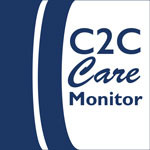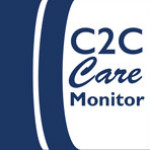Dirty and damaged 35mm slides
Tagged: conservation, film, photography
- This topic has 6 replies, 4 voices, and was last updated 7 years, 5 months ago by
Shelby Silvernell.
-
AuthorPosts
-
-
October 18, 2016 at 11:54 am #135069
Shelby Silvernell
ParticipantI’m working with a collection of 35mm slides from the 1950s and 60s that have a few different issues.
Some are encased in glass (two pieces of glass on either side of the film, secured under the cardboard mount), and the glass is unstable or broken in a few cases. Others appear to have water damage – moisture seems to have gotten trapped between the glass and film, damaging the film. Should the glass be removed from these mounts, in either case or both?
There are also a good number of slides not encased in glass which appear to have suffered water damage (there is bleeding on the mounts, the emulsion of the film is damaged, the film is buckling, etc).
All the slides are covered in dust, but the ones with water damage are particularly dirty (both mount and film). What would be the best method to clean these (both those with and without glass), given how fragile they already are?
Photos are attached, any thoughts or suggestions would be greatly appreciated!
Attachments:
You must be logged in to view attached files. -
October 20, 2016 at 12:12 pm #135076
 Quinn Morgan FerrisParticipant
Quinn Morgan FerrisParticipantHi Shelby,
Thank you for your great question, as well as the provided images. Since your query is somewhat outside my discipline, I am going to pass along your question to one of our experts to get a more informed opinion. Usual cleaning approaches may be ill-advised due to the delicacy of the emulsion. While I am reaching out, linked is the Preservation Self-Assessment Program‘s entry on slides. Hopefully this will help you in the meantime.
-
October 20, 2016 at 1:24 pm #135077
 Gawain WeaverParticipant
Gawain WeaverParticipantHi Shelby– Quinn asked for my input on this…slides that are as far gone as your first picture can’t really be cleaned or restored effectively. The gelatin image layer that holds the emulsion has been degraded by mold, much of the image is already gone, and what’s left is barely intact. If the image is really important then digitizing first, then attempting to clean, then digitizing again can be a good approach. If the image is really important then that’s probably best left to a photograph conservator. For other slides with less serious degradation of the image layer, removing the slides from their moldy and damaged mounts is a good idea. They can be cleaned with PEC-12 and Pec-Pads and placed in new mounts. Important information on the mounts can be transcribed by hand. How safe it is to clean them and the results of cleaning are going to vary widely from slide to slide. I would start with images that are less valuable to you to get some practice and get a sense of the results you can expect. And again, if they are really valuable for some reason, then sending them to a conservator might make the most sense. We’ve cleaned and digitized hundreds of thousands of 35mm slides in our studio and we can use a variety of solvents to clean them depending on what’s most effective. I recommend PEC-12 for your use simply because it’s one of the least likely of all the options to cause any further damage. Other solvent combinations can be more effective at cleaning but also dramatically more likely to cause further loss. Happy to answer any other questions on this forum or by phone.
best,
GawainGawain Weaver
Photograph Conservator
San Francisco Bay Area
tel 415.446.9138
http://gawainweaver.com/
http://www.twocatdigital.com/ -
November 1, 2016 at 12:24 pm #135111
Shelby Silvernell
ParticipantThanks Quinn for the link to The Preservation Self-Assessment Program’s entry on slides!
And thanks too to Gawain for the very helpful response on possible options for these slides! Luckily, there are only a few that have deteriorated as badly as the first image, most of the damage is less severe – some warping of the film itself, and stained and dirty mounts. It would be ideal to keep as many in their original mounts as possible, so for those with minor degradation, would you recommend using a brush to clean the grime off the cardboard mounts?
-
November 2, 2016 at 10:16 am #135113
 April SmithParticipant
April SmithParticipantHi Shelby,
I have reached back out to Gawain Weaver for your question regarding using a brush
to clean the cardboard mounts. Thank you for your patience! -
November 2, 2016 at 2:51 pm #135115
 Gawain WeaverParticipant
Gawain WeaverParticipantFor cleaning the mounts I would start with a brush at the end of a HEPA vacuum– or perhaps just a soft brush combined a small HEPA vacuum. Ideally the vacuum should have a variable suction control so that you don’t risk sucking the slide up against the wand you’re using. But the micro vacuum attachment kit that’s sold for $6.50 on Amazon will fit on to nearly any vacuum and can be used with care without the variable suction control. The idea is simply that you want to focus more on pulling the grime off the surface and into the vacuum rather than spreading it around with a brush.
But if in practice it seems like a brush alone does the job and a vacuum is overkill then trust your instincts on what’s best.
And of course, if you’re working with moldy materials take appropriate health precautions. Breathing mold may not be a big deal for you right now, but if you subject yourself to it, you can develop very serious reactions that can make you hypersensitive and it can become a serious medical issue. Fume hood is best, but at least very good ventilation, preferably with a respirator fitted with mold filters (hardware store)
Gawain
-
November 3, 2016 at 1:14 pm #135118
Shelby Silvernell
ParticipantThanks Gawain! This is very helpful information and gives me a clear idea on how to proceed!
-
-
AuthorPosts
- The forum ‘Connecting to Collections Care Forum Archives – 2015 through 2018’ is closed to new topics and replies.




